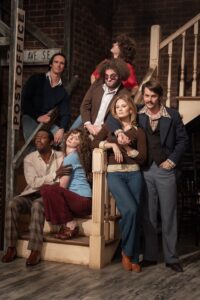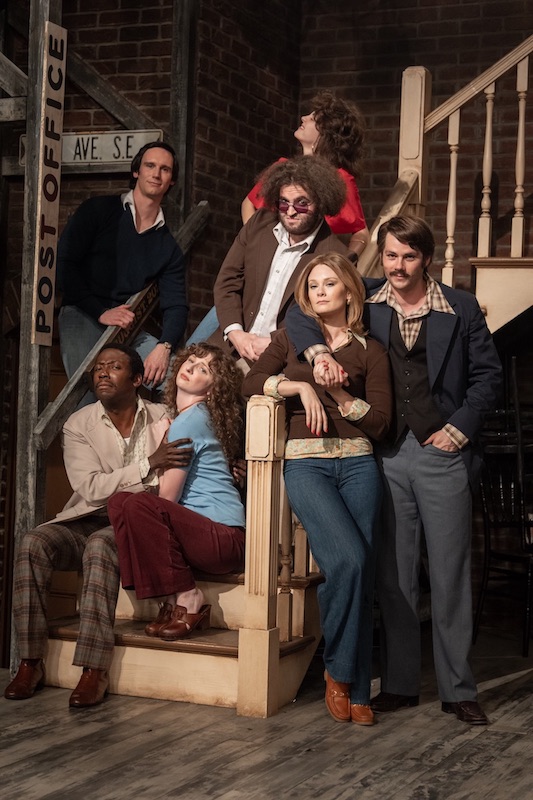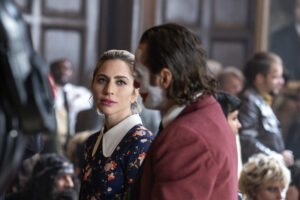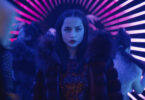Some filmmakers apparently assume frenetic activity is inherently funny.
It isn’t.
That’s the main problem with director Jason Reitman’s “Saturday Night” (R, 109 minutes, in theaters).
The comedy is about the 90 minutes leading up to the first episode of sketch comedy/variety series “Saturday Night Live,” then called “NBC’s Saturday Night.”
It’s Oct. 11, 1975, and the show’s young upstart creator, Lorne Michaels (Gabrielle LaBelle), must contend with a temperamental cast, a grumpy guest host (George Carlin, played by Matthew Rhys), meddling network execs, envelope-pushing writers, a callous crew, unreliable equipment and a ticking clock in preparation for the show’s debut.
Reitman’s camera follows Michaels, his wife (and one of the show’s writers) Rosie Shuster (Rachel Sennott) and fellow co-producer Dick Ebersol (Cooper Hoffman) as they run around putting out one fire after another as the pressure mounts. It’s nonstop, fast-paced action, but most of it isn’t funny. It’s just busy.

The “Saturday Night” cast playing the “Saturday Night” cast: clockwise from top left: Chevy Chase (Corey Michael Smith), Gilda Radner (Ella Hunt), John Belushi (Matt Wood), Dan Aykroyd (Dylan O’Brien), Jane Curtin (Kim Matula), Laraine Newman (Emily Fairn) and Garrett Morris (Lamorne Morris). (Hopper Stone/Sony Pictures)
Meanwhile, we’re introduced many colorful personalities, including the seven initial cast members: Chevy Chase (Corey Michael Smith), John Belushi (Matt Wood), Gilda Radner (Ella Hunt), Dan Aykroyd (Dylan O’Brien), Jane Curtin (Kim Matula), Laraine Newman (Emily Fairn) and Garrett Morris (Lamorne Morris). (Bill Murray would arrive a year later.) Also making their presence felt: quirky comedian Andy Kaufman and Muppeteer Jim Henson (both played by Nicholas Braun), edgy head writer Michael O’Donoghue (Tommy Dewey), threatening network exec Dave Tebet (Willem Dafoe), visiting comedy legend Milton Berle (J.K. Simmons) and many others. Michaels even endures a nasty phone call from Johnny Carson (voice of Jeff Witzke).
As these characters come and go (and come back again), co-writers Reitman and Gil Kenan pack a lot of familiar “SNL” events that occurred over time into this one night, and it seems that way, making the whole endeavor come off as far-fetched. And did John Belushi ice-skate in the bee costume he loathed at Rockefeller Center 15 minutes before the live show was to begin? Not likely. (An Entertainment Weekly piece that details the veracity of certain scenes says no.) Regardless, the scene comes off as contrived.
Belushi is presented as a brutish caricature, and most of the other characters are flat, too.
There are a few memorable highlights, including a clash of egos between Chase and Berle, and, especially, a hilarious rendition of a song by Morris near the end. But, overall, a documentary about the beginnings of “Saturday Night Live” would be much preferable to – and hopefully a lot funnier than – this broad attempt at capturing TV comedy history. ** (out of four)
Phoenix back as Arthur Fleck
“Joker: Folie a Deux” (R, 138 minutes, in theaters) gives you what you expect – if you expect the unexpected.
That’s especially impressive for a sequel.
It continues director Todd Phillips’ dark character study of Batman’s arch-nemesis, the Joker, and the man behind the clown makeup, Arthur Fleck. Joaquin Phoenix returns as the D.C. comic-book villain and once again delivers a no-holds-barred performance as he portrays the character as a tragically damaged human being.
Fleck has suffered relentless abuse as a child – and as an adult. As a result, this sensitive, unstable man has developed his maniacal alter ego. The sequel opens, imaginatively, as a Warner Bros. cartoon which portrays the Joker as a shadow – Arthur’s dark side – that often takes over Arthur’s identity and creates mayhem. Rather than seeming like a kind of possession, though, or a Jekyll-and-Hyde situation, the back and forth between Arthur and the Joker is more a merging of personalities, with madness the common denominator.
As the sequel opens, the Joker has already killed six people, including a talk-show host on national TV. While awaiting his murder trial incarcerated at Gotham City’s Arkham Asylum for the Criminally Insane, Arthur meets Lee Quinzel (Lady Gaga), soon to become the villainess Harley Quinn, at a music class. She looks at him and, with her thumb and index finger, pretends to put a bullet in her temple. It’s the beginning of a not-so-beautiful relationship.
“She gets me,” Arthur will later say.
Gaga’s powerhouse performance as the unhinged Lee not only matches Phoenix’s, it inspires a dramatic genre shift from the original “Joker.” Not only is the sequel a love story of deranged sorts, it’s also a musical, with the two leads frequently breaking into songs ranging from Rodgers and Hart’s “Bewitched, Bothered and Bewildered” to the Bee Gees’ “To Love Somebody.” While Gaga, of course, can really belt out a tune, Phoenix’s more halting delivery is just as effective.
To turn a Joker movie into a musical might seem as wrongheaded as doing the same to a TV cop show: Remember Steven Bochco’s “Cop Rock”?
But Phillips’ risky approach works, keeping us appropriately off-balance, just like its characters do. This is decidedly not a typical comic-book movie; it’s downbeat, relentlessly unsettling, arguably unsatisfying – at least in a traditional way. It no doubt will annoy many moviegoers. But for others (including yours truly), the movie is a riveting challenge and its weirdness – such as when the Joker affects a Southern accent while defending himself in court – can be quite amusing in its audaciousness. ***
Tim Miller is co-president of the Boston Society of Film Critics and a Tomatometer-approved critic. He teaches film and journalism at Cape Cod Community College in West Barnstable. You can contact Tim at [email protected] or follow him onTwitter @TimMillerCritic. Or you can ignore him completely.


































I always look forward to Tim Miller’s honest and outstanding movie reviews.